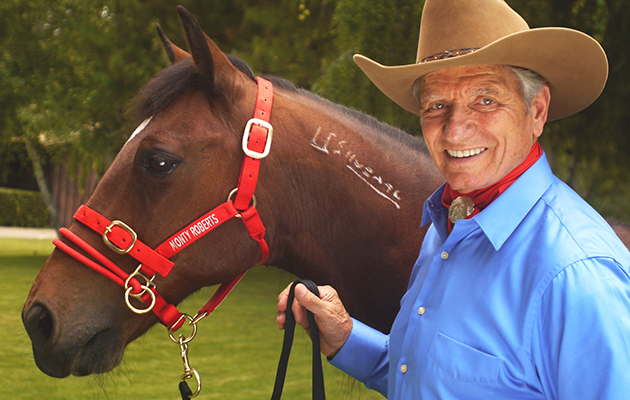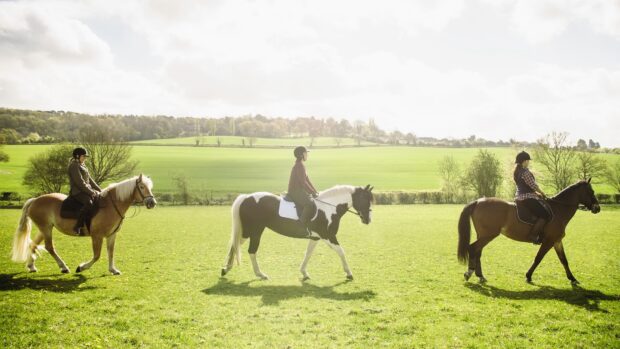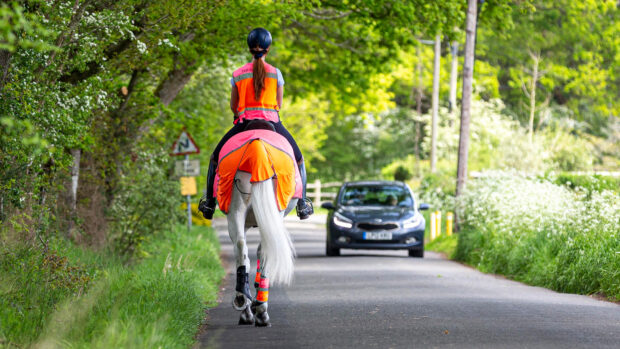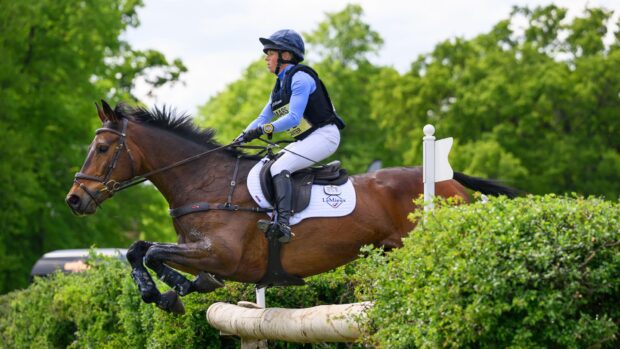From standing stock-still while mounting, to waiting patiently if you have to get off for a gate, there are plenty of benefits of ground tying, says Emily Donoho
What is ground tying?
Teaching your horse to stand still on command when not tied to anything, is called ground tying and is a rarely taught skill in the UK, but one with countless applications. If you want to adjust a jump, check his foot on a hack, assist another rider, open a gate, or move a fallen branch, having a horse who will stand quietly anywhere makes those jobs a lot easier.
Where does it originate from?
It comes from the American ranching tradition, where a ranch hand needed his horse to stay put in places without trees or anything to tie it to. Sean Davies, a Colorado-based horse trainer, explains: “If cowboys needed to get off their horse and treat an injured cow or handle a newborn calf, it was important that their horse would stand and not run off.” Since the mechanisation of ranching, fewer ranch hands are using horses, but Sean contends: “Every good cowboy still teaches his horse to ground tie.”
How can it benefit your horse?
Even if you aren’t doctoring cattle on the prairie, ground tying benefits your horse. Amy Feineman, another Colorado trainer, says: “Horses that ground tie also tend to stand tied better and pull back less frequently because they understand the concept of staying still separate from the idea of being attached to a solid object.” They also stand like a rock for mounting.
How can you teach ground tying?
Amy starts by teaching the horse to stand still while he is tied. “If he moves a leg, I promptly ask him to move it back to where it was,” she explains. “Eventually he will learn that standing still is a lot easier than getting constantly re-adjusted.”
Next, you stand facing your horse holding the lead. You step away from the horse. If he moves, you ask him to return to where he was. The better you are at anticipating what he’s thinking, the faster he learns. “Ideally you can catch the movement at a single step and simply back him up one step,” says Amy.
The horse soon figures out that life is easier if he stands still, and you can back away from him to the end of the lead. Now you drop the lead, gradually increasing the distance between you. Most cowboys leave the lead on the ground. “The weight of the rope down to the ground should be your signal for the horse to stand,” explains Sean. “It’s important that you reward the horse for standing still. If the horse begins to move, you correct it, then praise when they get back to standing.”
Continued below…
Liked this? You may also enjoy reading these articles…
The Dually training halter, designed by Monty Roberts

What is a Dually halter and how does it work?

Monty Roberts: ‘There’s no such thing as natural horsemanship’
What are the pitfalls to avoid?
Leaving a horse loose obviously has risks. Amy advises: “Know your horse’s limits and be honest with yourself when asking him to stand alone.” Some will stand all day; others will wander off as soon as you’re not watching. The horse must already be relaxed and focused — an anxious, distracted horse isn’t going to stand still.
He also needs to understand how to yield to pressure. Amy and Sean cannot overemphasise the importance of this: “Ground tying training without also doing desensitising work and rope work can be dangerous as well — never leave a rope or bridle on a horse that does not immediately give to pressure on the poll, nose, and legs.”



